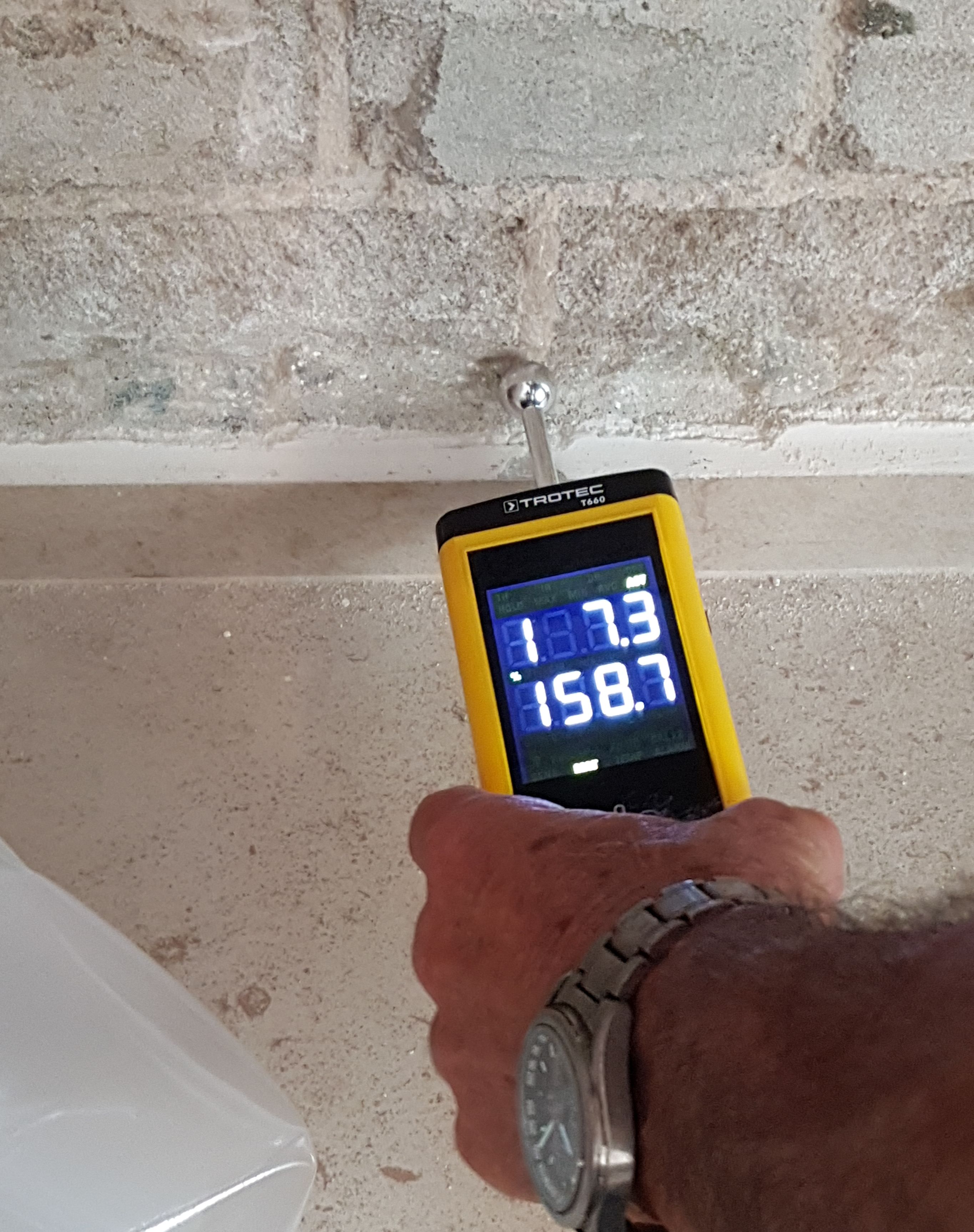Exactly how to Make Use Of a Moisture Meter to Discover Surprise Water Damage in Your Property
Exactly how to Make Use Of a Moisture Meter to Discover Surprise Water Damage in Your Property
Blog Article
Explore the World of Moisture Meters: Whatever You Required to Know
In the world of moisture meters exists a globe of precision and functionality that typically goes unnoticed. These tools, while apparently uncomplicated, hold a riches of information that can dramatically influence numerous markets and applications. Recognizing just how moisture meters run, the various kinds offered, and their diverse usages can clarify their value in making sure high quality and efficiency. By checking out the details of dampness meters, one can discover a valuable tool that goes beyond simple measurement, offering insights that can make a considerable distinction in countless areas.
Just How Moisture Meters Work
Moisture meters operate by determining the electrical conductivity or capacitance of products to identify the dampness content present. These meters are very useful tools across numerous industries, including farming, woodworking, and construction. By using different approaches such as pin-type or pinless innovation, wetness meters give exact analyses that aid professionals make notified choices.
Pin-type dampness meters work by putting the sharp pins right into the product being examined. On the various other hand, pinless moisture meters utilize electro-magnetic signals to check a larger area without creating any kind of damage to the material's surface.
No matter of the technique utilized, dampness meters play a vital duty in stopping problems such as mold and mildew development, architectural damage, or item problems caused by excess dampness. Comprehending how these meters job is important for ensuring the top quality and stability of materials in numerous applications.
Sorts Of Moisture Meters
Offered the critical role moisture meters play in various markets, it is necessary to recognize the various kinds offered to experts for properly assessing wetness levels - Moisture Meter. There are mostly two major kinds of dampness meters: pin-type and pinless wetness meters

On the other hand, pinless dampness meters utilize electro-magnetic sensing unit plates to check a larger location of the product without creating any type of damages. This type appropriates for rapidly scanning huge locations and is frequently utilized for flooring, walls, and ceilings. Pinless meters are hassle-free for taking analyses on completed surfaces without leaving any type of noticeable marks.
Both sorts of dampness meters have their benefits and are chosen based upon the specific requirements of the task available. Recognizing the distinctions in between these kinds is crucial for experts to make precise moisture analyses.
Applications Throughout Industries
Building and construction specialists rely on wetness meters to evaluate the moisture degrees in structure materials like concrete, drywall, and wood, which is vital for preserving architectural stability and avoiding issues like rot or mold. The floor covering industry utilizes dampness meters to gauge the wetness web content in subfloors before setting up various flooring coverings, avoiding expensive damages due to excess dampness. In the food industry, moisture meters are made use of to keep track of and manage moisture degrees in items such as grains, nuts, and dried out fruits to preserve quality and high quality.
Tips for Utilizing Dampness Meters
When measuring the dampness material in different products,Utilize the dampness meter's calibration settings to ensure exact readings. Calibration is essential for the correct functioning of a moisture meter. Prior to each usage, it is advisable to check and adjust the calibration setups according to the particular product being evaluated. Additionally, make sure the meter is established to the appropriate dampness range for the product you are determining to acquire one of the most precise outcomes.
When making use of a pin-type dampness More hints meter, insert over here the pins to the proper deepness recommended for the material being checked. This guarantees that the dampness analyses are drawn from the appropriate deepness within the product, supplying a more exact representation of its moisture material. For pinless dampness meters, bear in mind to keep proper call with the material's surface area to obtain trusted readings.
Routinely examine and change the batteries in your moisture meter to stop unreliable analyses because of low power. Store the meter in a safe and completely dry place when not in use to extend its life expectancy and maintain its accuracy. By complying with these ideas, you can make the most of the performance of your moisture meter and obtain accurate wetness web content dimensions across various products.
Maintenance and Calibration
To guarantee the accuracy of dampness content measurements, normal upkeep and calibration of the moisture meter are vital steps in its appropriate functioning. Maintenance entails maintaining the dampness meter free and tidy from particles that can influence its analyses. It is essential to adhere to the producer's guidelines for cleansing to stop damage to the tool. Furthermore, regular calibration is essential to validate the accuracy of the readings. Calibration readjusts the dampness meter to make sure that it gives dependable and consistent outcomes.
Calibration must be performed occasionally, specifically if the moisture meter is used often or in important applications where precise measurements are required. By keeping and adjusting the moisture meter frequently, users can trust the precision of the wetness material dimensions obtained.
Final Thought

To conclude, wetness meters play an important duty in various sectors by properly determining the wetness material of products. Understanding how these tools work, address the various kinds available, and appropriate upkeep and calibration are crucial for acquiring reputable results. Whether in construction, production, or farming, making use of wetness meters assists guarantee high quality control and effectiveness in processes.

In conclusion, wetness meters play a crucial duty in numerous industries by precisely gauging the moisture content of materials.
Report this page